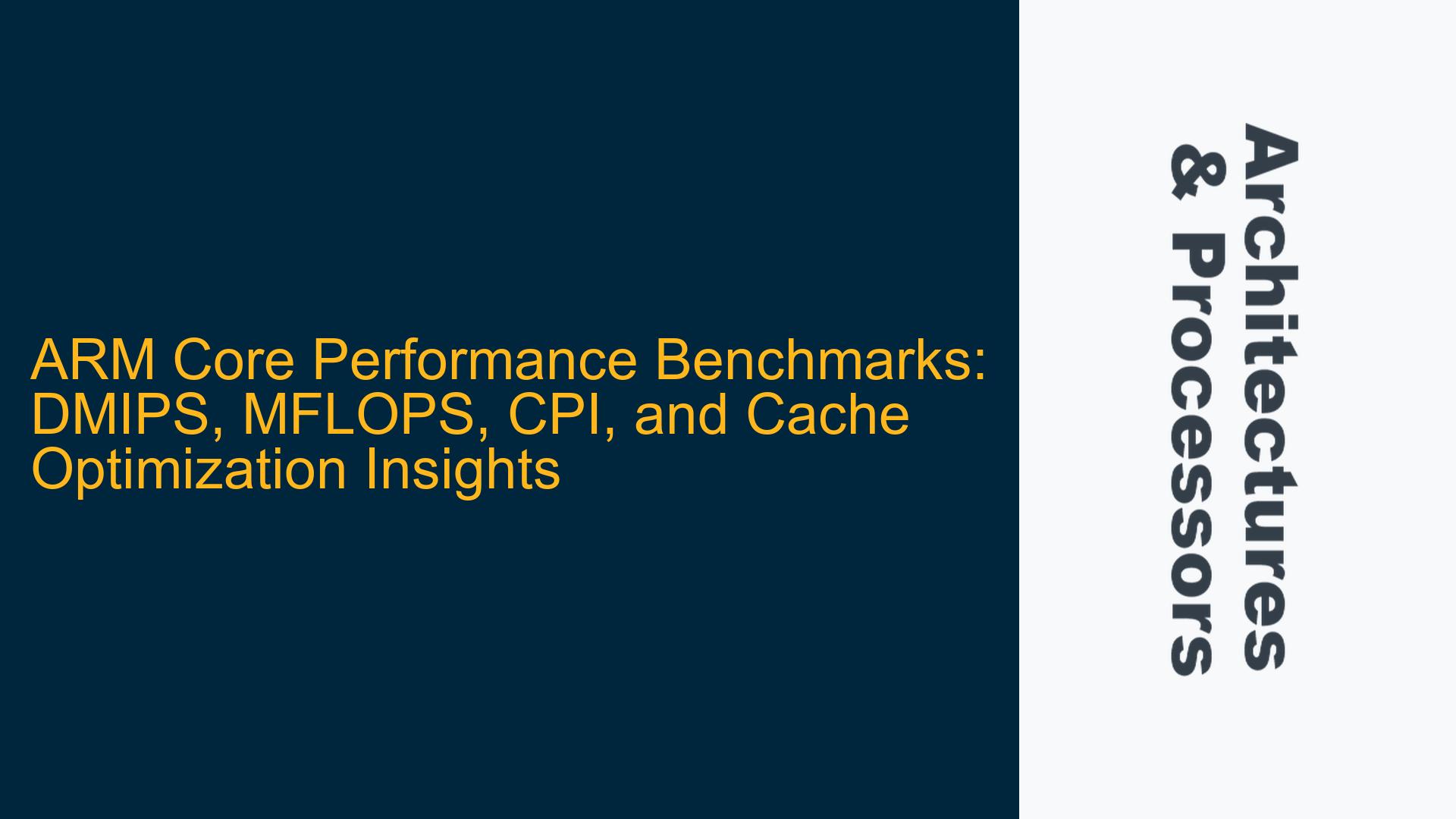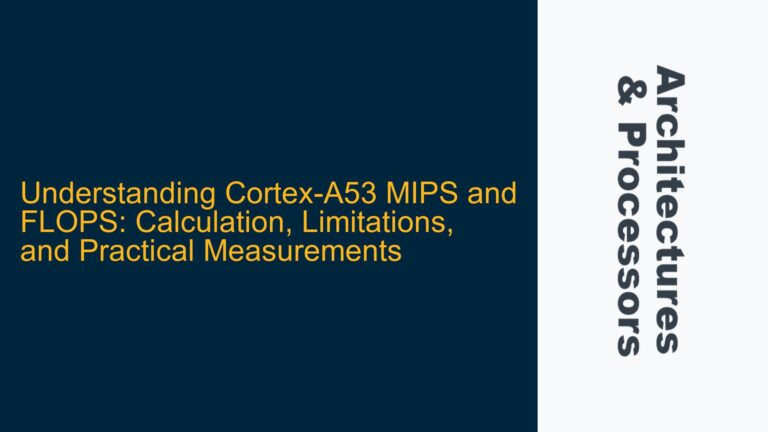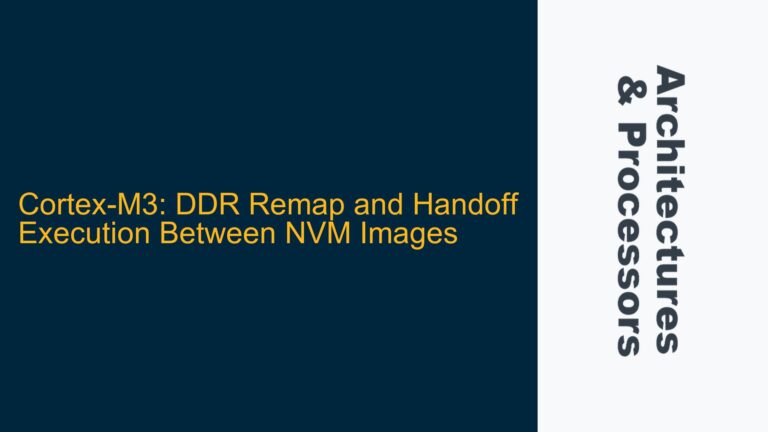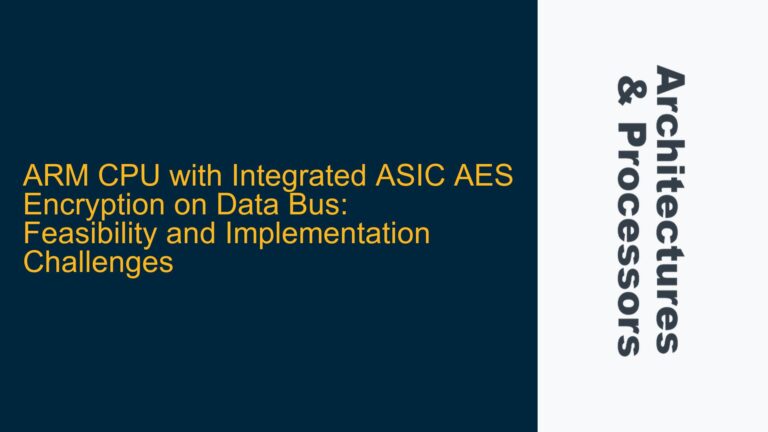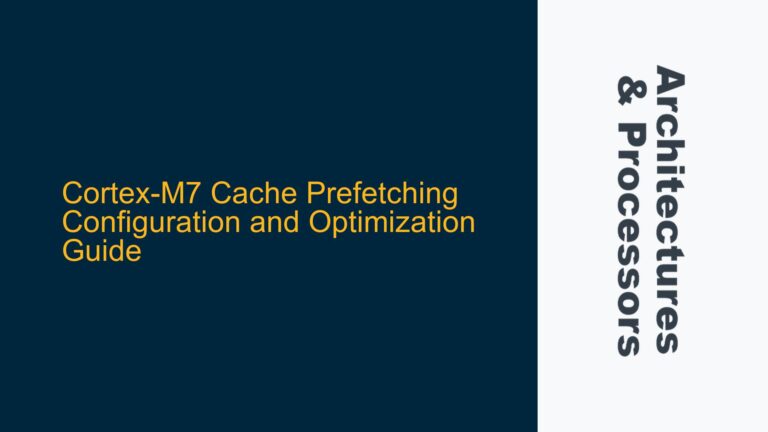ARM Cortex-M7, Cortex-A9, and ARM926EJ-S Performance Metrics and Optimization Challenges
When working with ARM cores such as the Cortex-M7, Cortex-A9, and ARM926EJ-S, understanding their performance metrics is critical for optimizing embedded systems. Key metrics include DMIPS (Dhrystone MIPS), MFLOPS (Million Floating Point Operations Per Second), CPI (Cycles Per Instruction), and cache-related penalties such as branch prediction failures and cache misses. These metrics are essential for evaluating the computational efficiency of these cores and identifying potential bottlenecks in real-world applications. However, obtaining and interpreting these metrics can be challenging due to variations in core architectures, memory subsystems, and implementation-specific optimizations.
The ARM926EJ-S, for instance, is an older core with a simpler architecture, while the Cortex-A9 and Cortex-M7 represent more modern designs with advanced features such as out-of-order execution, floating-point units, and tightly coupled memory (TCM). Each core has unique characteristics that influence its performance, and understanding these differences is crucial for selecting the right core for a given application and optimizing its performance.
DMIPS, MFLOPS, and CPI Variations Across ARM Cores
The performance metrics of ARM cores vary significantly depending on their architecture and implementation. The ARM926EJ-S, for example, is rated at 1.1 DMIPS/MHz, which is relatively low compared to the Cortex-A9 and Cortex-M7. The Cortex-A9, found in the NXP i.MX6, achieves 3000 DMIPS at 1.2 GHz, while the Cortex-M7 in the NXP i.MX RT 1050 delivers 1284 DMIPS at 600 MHz. These differences arise from architectural advancements such as superscalar execution, deeper pipelines, and improved branch prediction in the newer cores.
Floating-point performance is another area of divergence. The ARM926EJ-S lacks a floating-point coprocessor, making it unsuitable for applications requiring high MFLOPS. In contrast, the Cortex-A9 and Cortex-M7 include floating-point units, with the Cortex-A9 offering higher throughput due to its dual-issue pipeline and out-of-order execution capabilities. The Cortex-M7, while optimized for real-time applications, still provides respectable floating-point performance, making it a versatile choice for embedded systems requiring both integer and floating-point computations.
CPI is another critical metric that varies across cores. The ARM926EJ-S has an average CPI of 1.5, reflecting its simpler pipeline and lack of advanced features such as speculative execution. The Cortex-A9 and Cortex-M7, on the other hand, benefit from lower CPI values due to their more sophisticated architectures. However, achieving these lower CPI values requires careful optimization of code and memory access patterns to minimize pipeline stalls and cache misses.
Cache performance is also a significant factor in overall system performance. The Cortex-A9 and Cortex-M7 feature advanced cache architectures, including L1 and L2 caches, which can be dynamically configured to optimize performance for specific workloads. However, cache misses and branch prediction failures can still introduce significant penalties, particularly in applications with irregular memory access patterns or complex control flow.
Optimizing ARM Core Performance Through Cache Management and Code Alignment
To maximize the performance of ARM cores, developers must employ a range of optimization techniques, including cache management, code alignment, and instruction scheduling. One effective strategy is to leverage tightly coupled memory (TCM) to reduce latency for critical code and data. TCM provides deterministic access times, making it ideal for real-time applications where performance predictability is essential. By placing frequently accessed code and data in TCM, developers can minimize cache misses and reduce the impact of bus contention.
Code alignment is another critical optimization technique. Aligning code and data on cache-line boundaries can significantly improve performance by reducing the number of cache lines fetched during execution. This is particularly important for the Cortex-A9 and Cortex-M7, where cache-line fills can introduce substantial latency. Additionally, aligning branch targets on cache-line boundaries can improve branch prediction accuracy, reducing the penalty for mispredicted branches.
Instruction scheduling is also essential for optimizing performance on superscalar cores such as the Cortex-A9. By carefully arranging instructions to maximize parallelism and minimize dependencies, developers can achieve higher instruction throughput and lower CPI. This often involves unrolling loops, reordering instructions, and using SIMD (Single Instruction, Multiple Data) instructions to exploit data-level parallelism.
Cache management is another area where developers can achieve significant performance gains. The Cortex-A9 and Cortex-M7 allow developers to configure cache policies, such as write-through versus write-back, to optimize performance for specific workloads. Additionally, prefetching techniques can be used to reduce cache miss penalties by anticipating future memory accesses and loading data into the cache before it is needed.
Finally, developers should consider the impact of compiler optimizations on performance. Modern ARM compilers, such as GCC and ARM Compiler, offer a range of optimization flags that can significantly improve performance. These include options for loop unrolling, function inlining, and instruction scheduling. However, developers should be cautious when using aggressive optimizations, as they can sometimes introduce subtle bugs or reduce code readability.
In conclusion, optimizing the performance of ARM cores such as the Cortex-M7, Cortex-A9, and ARM926EJ-S requires a deep understanding of their architectures and performance characteristics. By leveraging techniques such as cache management, code alignment, and instruction scheduling, developers can achieve significant performance gains and ensure that their embedded systems meet the demanding requirements of modern applications.
